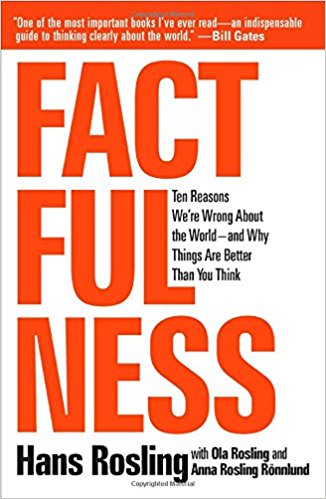Podcast: Play in new window | Download
To this point in this series on the psychology of persuasive communication, we’ve covered first impressions, attention, understanding, credibility, and deciding. Could anything possibly go wrong?
Unfortunately, yes. You can’t be sure you’ve persuaded anybody until they’ve made an actual decision—and they may not be ready to that yet. Maybe they want to hear from other points of view, or gather additional information. Maybe they need to convince others. So, when they finally arrive at the decision point, will they remember enough of what you said to make the case for you?
A lot of what we’ve talked about already can certainly help. Capturing their attention ensures that it at least gets into their memory. By making your message clear, it’s more likely to connect to stuff they already know, and if they’ve seen value in what you said, they have an incentive to at least try to remember.
Yet, the sad fact is that people won’t remember most of what you told them even just a short time after the conversation. One book claims that, after a 10 minute presentation, people forget 50% of what you said immediately, 75% by the next day, and 90% a week later. That was an old study, but I would bet that it’s even worse today, with all the distractions we have in our lives.
That sounds bad. You put in all that time to prepare for a critical presentation and 90% of it goes to waste? Actually, it doesn’t have to be bad news. Remember that the test of persuasive communication is whether people actually decide or act the way you want them to, and 10% may be more than enough—as long as it’s the right 10%! So your first rule, if you have a complex topic is BE VERY CERTAIN ABOUT WHAT YOU WANT THEM TO REMEMBER. Don’t get too ambitious and try to overload them with different points.
Next, to boost the odds that they will retain what you told them long enough to put it to use, here are four general principles:
Get them thinking
Dan Willingham, author of Why Don’t Students Like School?, has a great line: “Memory is the residue of thought.” When you think about it, we’re bombarded daily with stimuli, experiences and information, so our brains need to “decide” what to try to retain. Can you remember the color of the car that was next to you at the red light three blocks form your office yesterday? Most likely not, unless you noticed it and thought about it for some reason. Maybe the driver was acting suspicious, or maybe you’ve been thinking about buying a new car and you liked the color. Willingham says it works like this: if you don’t think about it very much, your brain figures you won’t need it again so it doesn’t bother storing it. But if you think about it, it must be important so the brain figures you’ll need it again.
How do you use this? Do whatever you can to get them thinking and to show you what they’re thinking about it. Ask questions, solicit their feedback and questions and even provoke arguments. If you think they’re bought in and have to get approval from someone else, ask them to tell you what points they’re going to make If memory is the residue of thought, the more they think, the more residue remains.
Make it meaningful
Just as a jigsaw puzzle is difficult to complete without seeing the picture on the box, unconnected facts are tough to remember unless there’s some bigger picture to remember, which is why John Medina says, “meaning before detail”. But when you understand the larger meaning, the facts are easier to recall when you reconstruct the meaning. Make sure they get the big picture, which is incidentally the bulk of that 10% you want them to get.
Meaning is easier to get when they can perceive a clear structure to your logic. Chess masters can glance for just a few seconds at multiple games in progress and accurately reconstruct them from memory, which novices can’t do. But when their memory is tested using boards on which pieces are placed at random, their memories are just as bad as yours and mine—because there’s no logic for them to follow.
Far and away the easiest structure to remember is the basic structure of every story ever told: situation, conflict, and resolution, or as Kurt Vonnegut put it: “Somebody gets into trouble, then gets out of it again.” It works great for entertainment but also just as well for persuasion. Any time you’re trying to talk someone into something, you need to get them into trouble then get them out.
Make them feel it
Emotions can be messy, and that’s exactly the point: messes can be hard to erase. So, if you’re talking about a problem that needs to be solved, you need to bring out more than the financial impact. Should they be afraid, angry, disgusted? If it’s a great opportunity, should they be excited, expectant, greedy?
If you want to talk about customer dissatisfaction, put a face on your statistics. Use vivid details that they can see, hear, feel and touch in their minds.
Make it sticky using five memory SAVER tools
Not all information is created equal in terms of its ability to stick in the minds of your listeners. Here are five tools under the acronym SAVER:
STORIES: Stories stick. I’ve mentioned story in the sense of the structure of your overall conversation or presentation, but this is about individual anecdotes. Humans have passed on learning for millennia, and our brains are exquisitely attuned to hearing them, getting drawn in to their reality, and remembering them. But make your stories have a purpose beyond mere entertainment: because they’re so memorable, it’s important that any story you tell supports your theme or one of your main points.
ANALOGIES: Familiar things are more easily remembered, and analogies make things familiar. If you’re presenting an idea that is a big change from the status quo, analogies can make it seem safer by its familiarity. If it’s a sales presentation, some of the best analogies are drawn from the way your customer does business. If you can show them how your solution fits with something they already do, you get the double benefit of familiarity and credibility.
VISUALS: Forget the myth about auditory, visual and kinesthetic. We’re all visual learners; pictures stay in our minds far more commonly than abstract concepts and words. John Medina tells us in his book Brain Rules that retention goes from 10% to 65% when pictures are used. As with stories, this makes it important to make sure your pictures support your points, rather than just being decorative.
EXAMPLES: Examples make abstract things real. You see it every night on the evening news: if they run a story about the unemployment rate, they will profile a family struggling to make ends meet. Chip and Dan Heath call it the Mother Teresa effect, because she said, “If I see one, I will act.”
REPETITION: Churchill said, “If you have an important point to make, don’t try to be subtle or clever. Use a pile driver. Hit the point once. Then come back and hit it again. Then hit it a third time—a tremendous whack.” This is excellent advice, but pay attention to the subtlety: Churchill repeated it slightly differently each time, so that it doesn’t sound repetitious.
I’d like to leave you with one last thought, and I hope you will remember it. Of all people you want to remember your presentation, you are the most important. In fact, the study of memory was actually started by folks in my line of business. You might say they were my professional ancestors: those who taught public speaking skills in the ancient Greece and Rome. I those days speakers spoke for hours and it was considered unmanly to need notes, so they devised different ways of memorizing their points, and a lot of the mnemonic devices they used are the same ones that people in professional memory contests still use today. Today we’re told not to memorize our presentations because it makes you seem too scripted, but there’s a lot to be said for knowing your material cold—not word for word, but being able to talk without referring to notes, or what’s worse, looking back at your slides. People who have an excellent command of the facts are always impressive, and I would submit even more so today.






